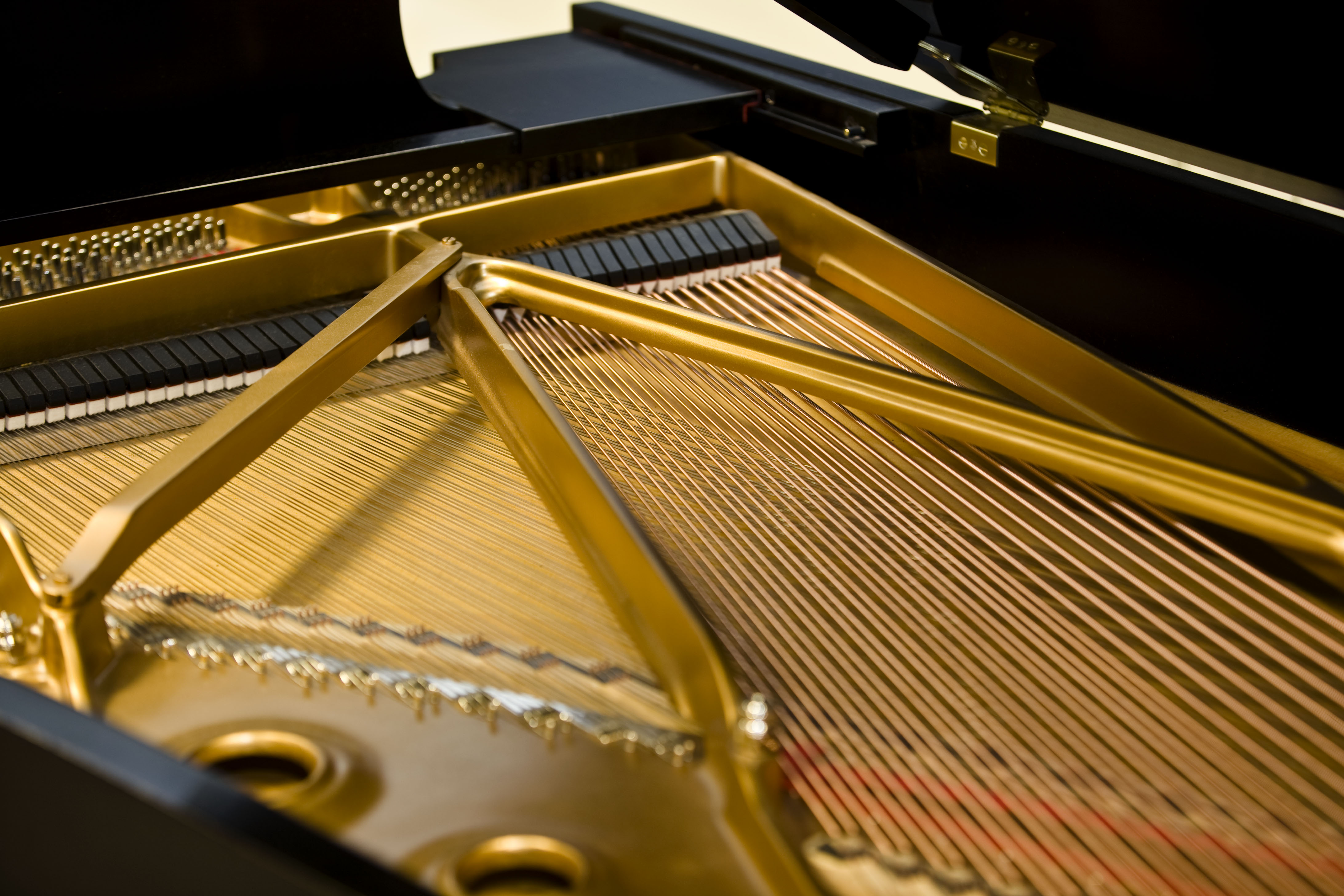So in this post, I'm going to be explaining to you all and showing you guys the different parts of a grand piano. I'll be showing you exactly what makes it tick!
In this post I'm going to be showing you all of the particularly important wooden parts of a piano. As you could probably understand, the grand piano being such a heavy instrument, it needs the strongest raw materials to literally keep it upright and standing, that it why it is usually made out of hardwoods such as maple and mahogany.
The Agraffe, Backcheck, Belly (however the belly refers to the general part of the piano where the soundboard and pin blocks lie) , Bridge - (Treble and Base), Treble Pins, Capstan, Flange, Hammer, Key, Keytop, Key Butto, Damper, Keybed, Keyframe, Pedals and Pedal Lyres and Pinblocks are all different but particularly important parts of the grand piano.
The Bridge -
The Bridge of a piano connects the strings of the piano to the soundboard. That is why the Bridges are usually made from a wood such as maple. The maple tree, usually grown in North America, around New York State, Canadian Provinces and in New England is favoured by most companies such as Steinway, because Maple is such a strong wood.
The pinblock is also made out of a hardwood such as maple. The pinblock is needed because it gives resistance to the tuning pin. The tuning pin in turn is needed to keep all of the individual pins and strings in tune.
The Keyframe -
This is usually made out of a hardwood as well, usually mahogany and sometimes maple, and is a frame that actually holds the black and white keys upright. This is done by many different holes and pins that are put into the keyframe and which the sharp and natural keys sit on top.
Rim -
The rim can be split into three different parts and can be seen at a glance. They are the spine, the bentside and the tail .
The spine is the left side of the piano which is long and flat.
The bentside is the right hand side of the piano and you can probably tell that it is bent or curved.
The tail is the part of the rim which is opposite the keyboard. It is also curved but on harpsichords is straight.
The rim is made from individual layers of thin wood that are called veneers. The reason it is made from layers of wood instead of a block of wood is because in heat the block contracts and expands and this could cause the entire rim to crack. The wood almost resembles plywood.
The spine is the left side of the piano which is long and flat.
The bentside is the right hand side of the piano and you can probably tell that it is bent or curved.
The tail is the part of the rim which is opposite the keyboard. It is also curved but on harpsichords is straight.
The rim is made from individual layers of thin wood that are called veneers. The reason it is made from layers of wood instead of a block of wood is because in heat the block contracts and expands and this could cause the entire rim to crack. The wood almost resembles plywood.

No comments:
Post a Comment